Scribing Helicopter Stories: Part 1 – Creativity
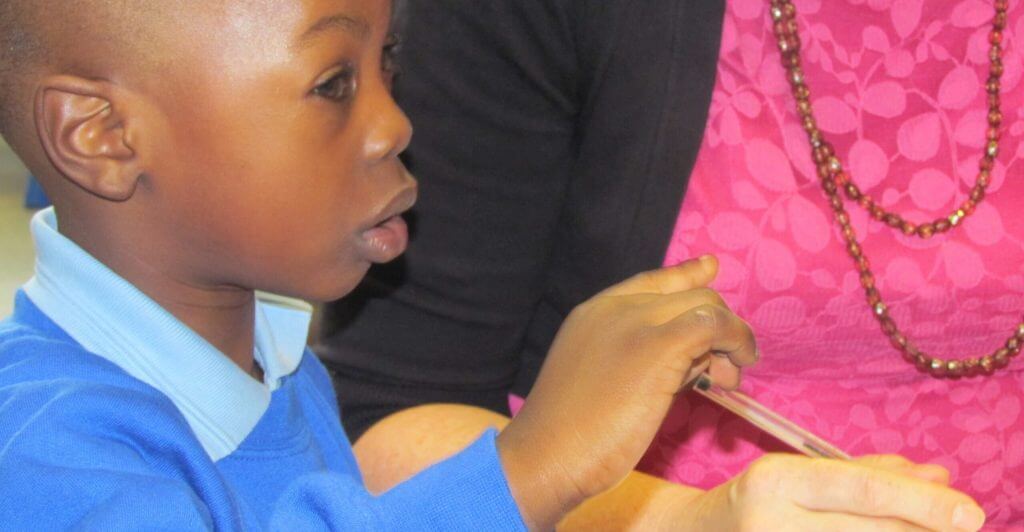
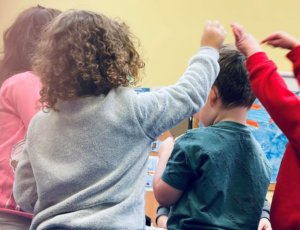
One of the questions that is often asked about Helicopter Stories is why both Isla Hill and I scribe verbatim, exactly what each child dictates, without attempting to correct their grammar or push the child to elaborate on his or her story. I have several reasons for why I do this and over the next few blogs I am going to explain some of these in detail.
I will start with my favorite reason – Creativity:
Creativity is one of the most important skills we have and yet it is often the least encouraged within our society. It isn’t about conforming to rules and working within rigid structures. It is about pushing boundaries, asking questions and taking risks.
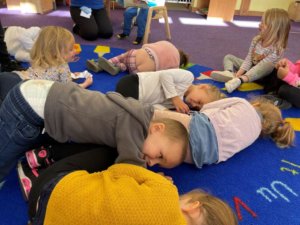
When we are working creatively we find ourselves thinking in different ways, making connections that others might not have seen, inventing new products, imagining new possibilities and solving problems. In his Ted Talk Do Schools Kill Creativity Ken Robinson discusses how children have a natural capacity for being creative, and how sadly we school this out of them.
As a writer myself, a lot of my first drafts are about getting my story out and not worrying how awful it sounds to anyone else. For me, during Helicopter Stories, the most important premise is to allow children to explore their creativity without input or correction from an adult. Children are given the opportunity to make up a story, without planning or fixing it first. Amazingly, they do this easily and willingly from as young as just two years of age.
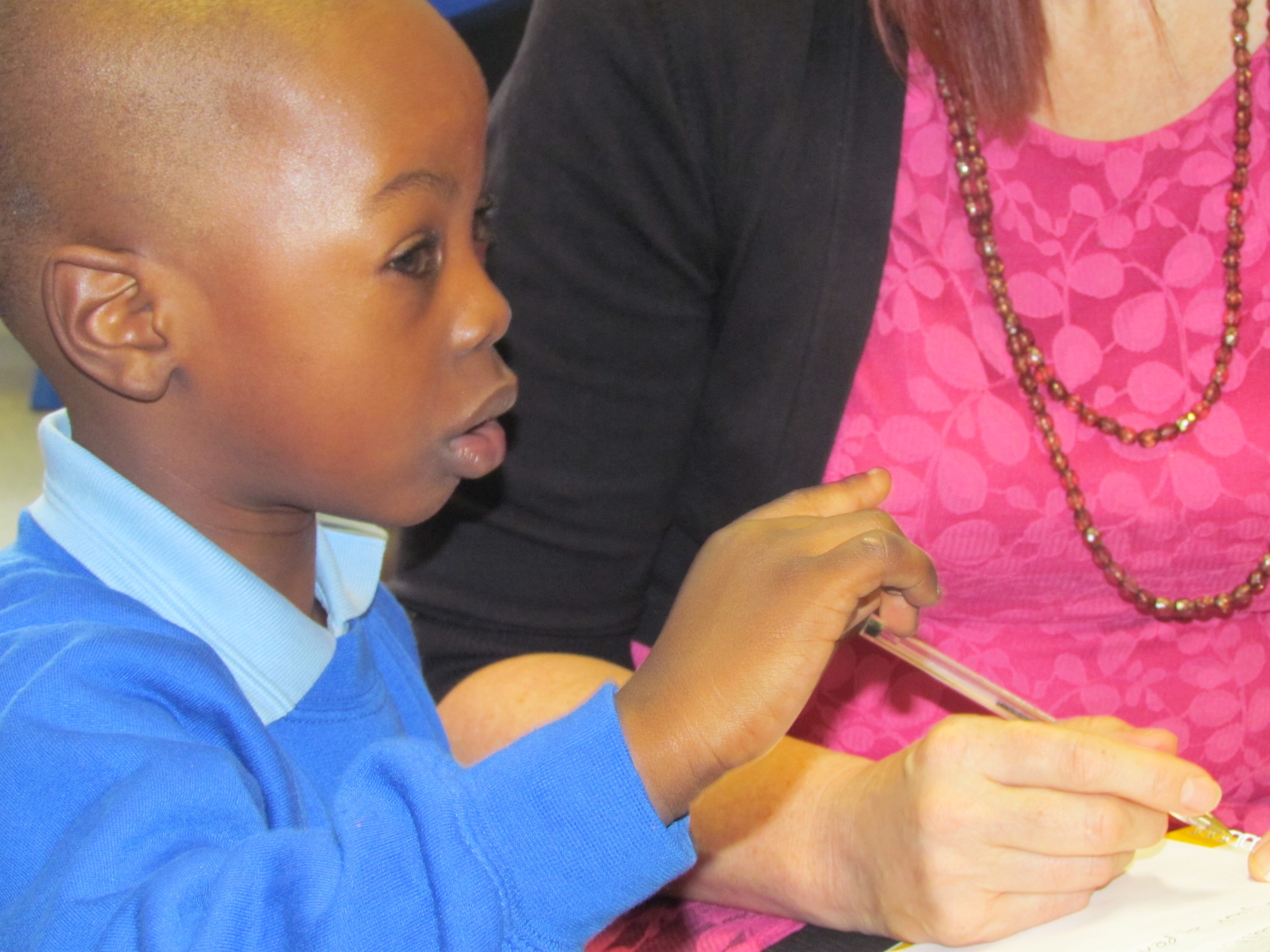
There are many skills that children utilise when they dictate their own stories. They are being spontaneous, improvising, communicating with an audience and creating something from nothing. In order to achieve this, they readily use all the means at their disposal; the expression on their faces, the movement of their hands, the words or sounds they know and the ones they have invented to serve this purpose. They communicate with urgency, telling the story as it forms in their minds, so that we can record it on paper.
To be brought back from this place of imagination to the world of correct grammar or questions that expand on the plot, is in my mind a distraction that is jarring. Imagine you were telling someone about a time when you were happy and they kept interrupting you to find out what colour dress you were wearing, or how many people were there, or what the date was. Eventually your focus would be lost and the story would fizzle out.
When we scribe children’s stories verbatim, we place value on the words they use to describe their universe. The stories we scribe reveal so much about the way an individual child sees their world, their understanding, and the nuances they use to explain it. Often children’s dictated stories contain a rhythm or an unusual way of playing with language that is worth celebrating for its unique creativity. This element that is so special in their stories would be lost if we decided to correct them.
This sentence below is part of a story from a five year old EAL girl. The princess was running away from a big bad wolf. She eventually arrived at her house and ran inside.
‘And then she closed the door, a thousand cellotapes.’
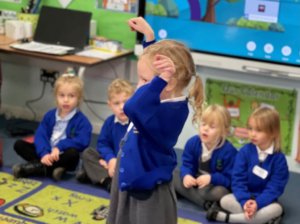
What a beautifully descriptive way of locking a door. During the acting out, the girl sealed the door with an imaginary roll of tape, sticking it across the entrance to ensure no wolf could get in. Look at of the rhythm of her sentence, the way every word counts, the vividness of her imagination.
To be creative we need to be in a safe space. If we are judged, or our way of speaking is questioned, we will be unable to take the risks necessary to make up stories.
John Cleese describes creativity as a bit like a tortoise. It pokes its head out nervously to see if the environment is okay before it fully emerges. If we want to develop a creative classroom, we need to create a ‘tortoise enclosure,’ a safe haven where creativity can emerge.
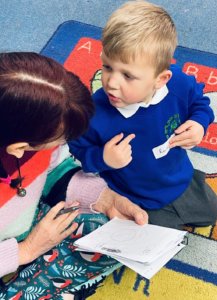
As a writer myself, a lot of my first drafts are about getting my story out and not worrying how awful it sounds to anyone else. For me it is a distraction to concentrate on the micro management of the words on my page, have I spelt this one right, could I say that one better, until I have an idea of the bigger picture. Editing happens later, but during the first stage of creativity, I just concentrate on getting the story out.
I have seen 4-and-5-year-olds retell the same story week after week after week as part of their own self-elected editing process. They might change one aspect of it, or one word, but gradually they are shaping their story, and developing the way they tell it. This is the same as we all do, when we share a personal story of excitement or trauma with lots of different friends. With each retelling we add and hone our version, until we are able to tell it almost without thinking.
Our two, three, four, five, six and seven year olds are just beginning to craft their stories. They need time to play with the wonderful language they are acquiring and time to discover their own rhythms and the ways they communicate with an audience.
By scribing verbatim through Helicopter Stories – I find myself in the privileged position of hearing a range of stories, from a range of children, each of them told in a unique voice.
There was a monster in the woods. And it did eat the trees. The monster went to a house, and sat on a chair. And it did say, ‘Where’s my supper.’ And it did look at the pots on the stove. And it did see that someone was cooking. And it was afraid. And it ran up to the bedroom and hide-ed itself under the covers.
Nicholas – Age 5
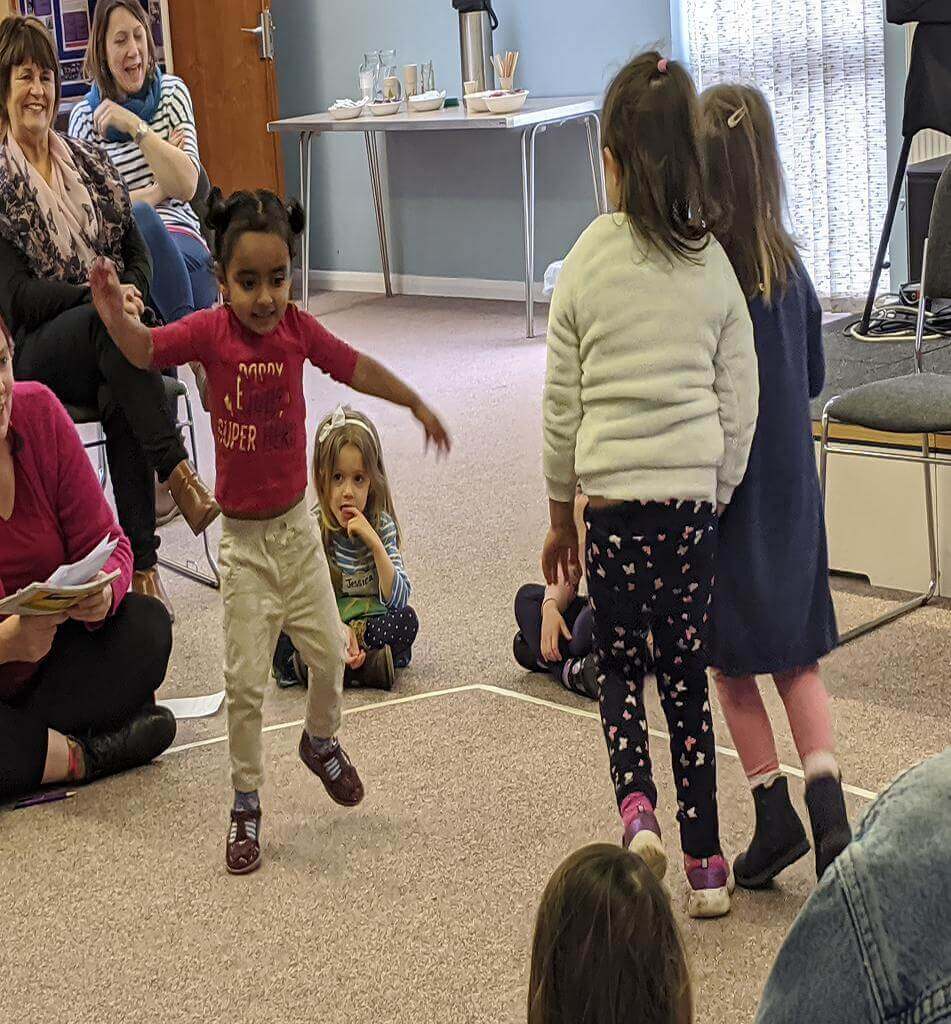
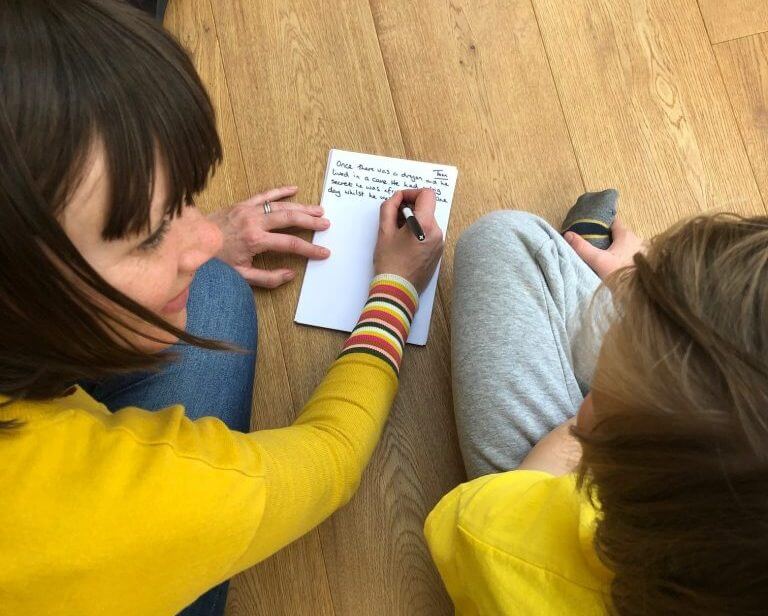
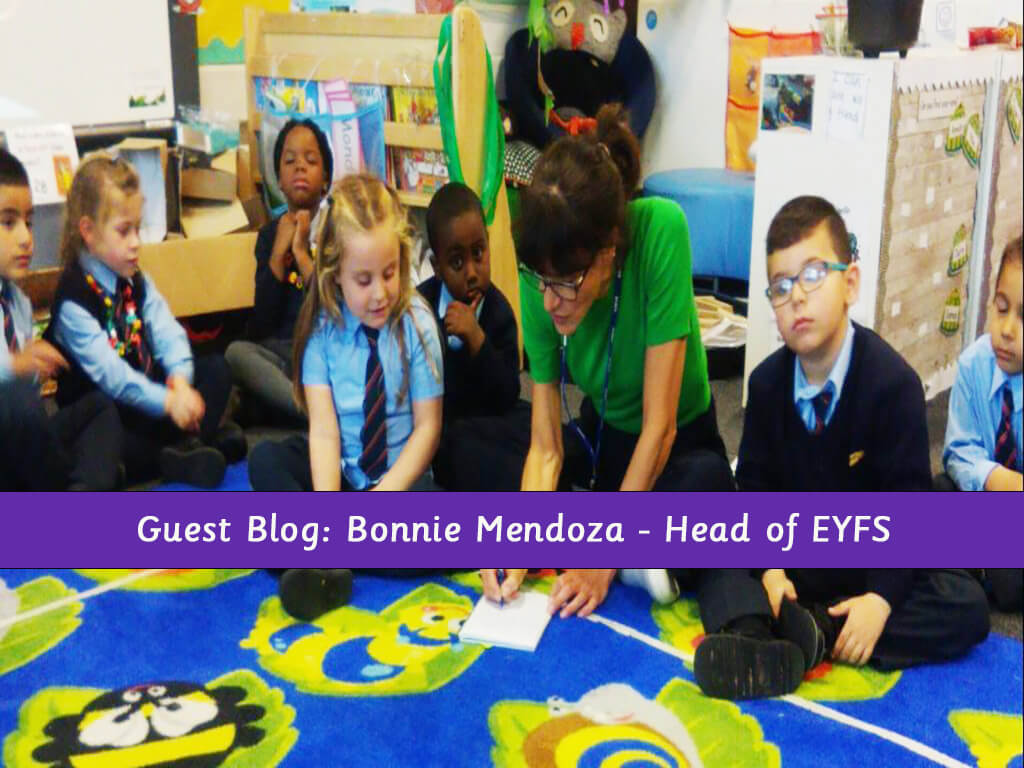
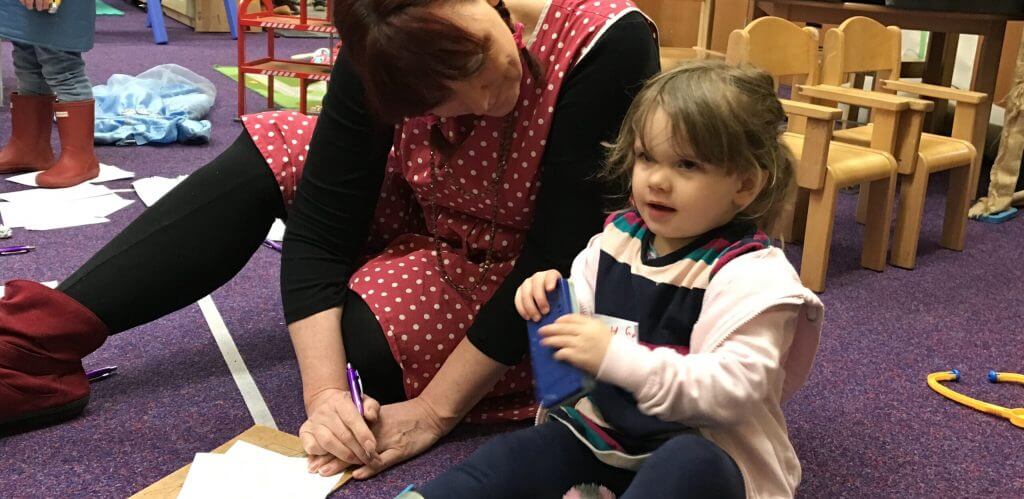
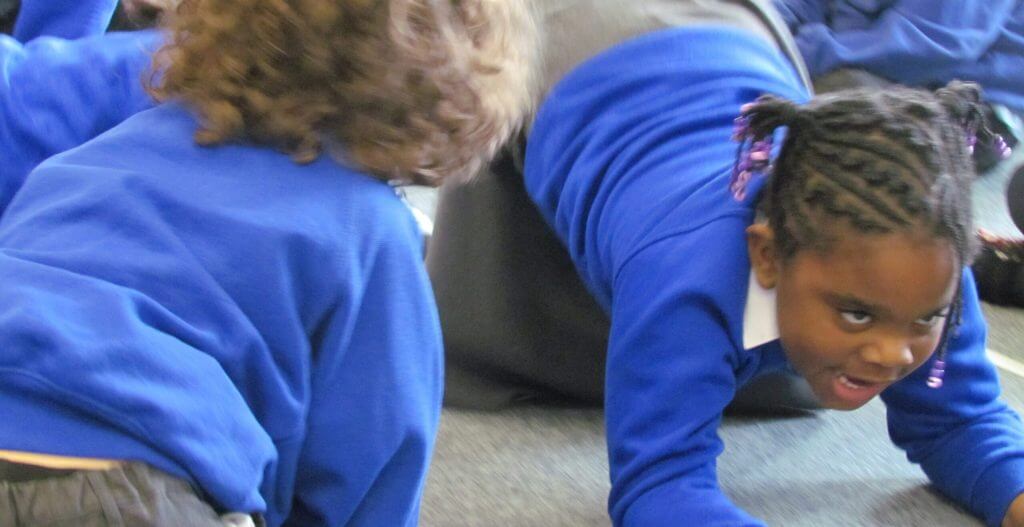
I am new to this but i am loving every little bit of the stories the kids are telling and I am learning to take the back seat and let the Children enjoy themselves through story telling.
That is so lovely to hear. Taking the back seat is important, but even more than that, it is vital that you love the stories your children are sharing. The fact that you are doing both is fantastic. I’m so glad it is working for youx
My Irish family use ‘did’ like this 🙂
That’s interesting. Yeah dialect plays a huge role in how children speak. That’s why not correcting grammar during Helicopter Stories is so key. What we might think of as incorrect, might be dialect or non standard English and its important these voices are heard and valued.
I love to see the focus on each child and the words they say as they tell their story. The verbatim scrive gives each child a voice and their creativity originality.
It’s so lovely to hear that it is okay sit back and let children say their stories without editing and next steps. ‘Imagine you were telling someone about a time when you were happy and they kept interrupting you to find out what colour dress you were wearing, or how many people were there, or what the date was.’ This is a great way of putting it!
I completely agree about scribing the child’s exact words. I believe this shows we value what the children say [rather than correcting grammar etc] and supports creativity.
I am learning to stop butting into their time to speak and build. I am pleased to be on this course as it gives a sense of freedom to allow the children to be themselves in their world. I am now finding myself asking more questions about what is happening and not trying to fix!!
This is great to hear Bernadette. It’s amazing how some of these deeper pedagogies help practitioners to rethink their practice in all areas not just for Helicopter Stories.